Lesson 3: The Creation
Moses 2-3, Genesis 1-2, Abraham 4-5
What does the creation account tell us?
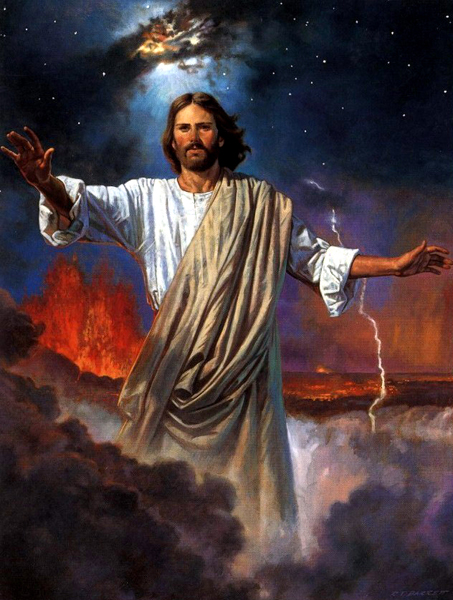 For our current needs, the Lord has given us the beautiful, powerful, concise, and systematic creation accounts of the scriptures. He has also given us collectively an intellectual curiosity that has opened the frontiers of science for the betterment of all life. I believe that Latter-day Saints would do well to realize that it will not be until Christ comes again that the full story of God’s creative act will be made known – through revelation. (D&C 101:32) In the meantime we can learn to live with certain questions not yet answered, trusting that it is wisdom in God that not all things are made known in our day. Perhaps the most powerful message that is contained in the Genesis creation account (and in the other accounts as well) is that the Creation was a deliberate act of God. The scriptures leave no room for the idea that the existence of life on Earth is accidental. We also learn from the Genesis account that the crowning achievement of the Creation was man. 1
For our current needs, the Lord has given us the beautiful, powerful, concise, and systematic creation accounts of the scriptures. He has also given us collectively an intellectual curiosity that has opened the frontiers of science for the betterment of all life. I believe that Latter-day Saints would do well to realize that it will not be until Christ comes again that the full story of God’s creative act will be made known – through revelation. (D&C 101:32) In the meantime we can learn to live with certain questions not yet answered, trusting that it is wisdom in God that not all things are made known in our day. Perhaps the most powerful message that is contained in the Genesis creation account (and in the other accounts as well) is that the Creation was a deliberate act of God. The scriptures leave no room for the idea that the existence of life on Earth is accidental. We also learn from the Genesis account that the crowning achievement of the Creation was man. 1
Bruce R. McConkie stated: Moses sees a vision of God’s creations. Moses learns that God created all things. Our analysis properly begins with the frank recital that our knowledge about the Creation is limited. We do not know the how and why and when of all things. Our finite limitations are such that we could not comprehend them if they were revealed to us in all their glory, fullness, and perfection. What has been revealed is that portion of the Lord’s eternal word which we must believe and understand if we are to envision the truth about the Fall and the Atonement and thus become heirs of salvation. 2
Ancient Cosmology
 The Hebrew view of the universe was different than how we might think of it today. The most striking feature of this ancient cosmology is the “firmament,” a solid dome which separates “the waters from the waters” (Genesis 1:6). The Hebrew word translated in the Latin Vulgate as firmamentum is raqia’ רקיע whose verb form means “to spread, stamp or beat out.” The material beaten out is not directly specified, but both biblical and extrabiblical evidence suggests that it is metal (see Exodus 39:3 and Jeremiah 10:9 for the use of raquia’). I have heard Biblical scholars refer to this firmament as a clear dome over the earth, with “windows” that allow water through, this being where we receive rain (Malachi 3:10). We also read in the Bible of the waters that are above the heavens (Psalms 148:4).
The Hebrew view of the universe was different than how we might think of it today. The most striking feature of this ancient cosmology is the “firmament,” a solid dome which separates “the waters from the waters” (Genesis 1:6). The Hebrew word translated in the Latin Vulgate as firmamentum is raqia’ רקיע whose verb form means “to spread, stamp or beat out.” The material beaten out is not directly specified, but both biblical and extrabiblical evidence suggests that it is metal (see Exodus 39:3 and Jeremiah 10:9 for the use of raquia’). I have heard Biblical scholars refer to this firmament as a clear dome over the earth, with “windows” that allow water through, this being where we receive rain (Malachi 3:10). We also read in the Bible of the waters that are above the heavens (Psalms 148:4).
It makes sense as we look at ancient cosmology to understand that something needs to support the firmament. If it were not so, the watery chaos would collapse on all sides, and the inhabitants of the earth would be destroyed (see Genesis 7:11). It is not surprising then that one finds biblical references to the “pillars” or “foundations” of the heaven and earth. In the book of Job we find that “the pillars of heaven tremble, are astounded at God’s rebuke” (Job 26:11). In 2 Samuel we also find that God’s anger makes “the foundations of the heavens tremble” (2 Samuel 22:8). God’s fury also affects the pillars of the earth: “Who shakes the earth out of its place, and its pillars tremble?” (Job 9:6); and “the foundations of the world were laid bare at thy rebuke, O Lord, at the blast of the breath of thy nostrils” (Psalms 18:15). There seems to be some confusion about where the pillars of heaven are located. Generally, in the Bible and other ancient literature, distant mountains were the most likely candidates.
How long did creation take?
 Genesis 1:5 Moses 2:5 The first day: The earth and firmament were organized in six periods of time. Officially the Church has not taken a stand on the age of the earth. According to three theories, the earth could have been created in 6 literal days, 6 thousand years, or six creative periods of indeterminate lengths of time. (I hold to the idea that the earth was created in six creative periods, based on the evidence I have studied).
Genesis 1:5 Moses 2:5 The first day: The earth and firmament were organized in six periods of time. Officially the Church has not taken a stand on the age of the earth. According to three theories, the earth could have been created in 6 literal days, 6 thousand years, or six creative periods of indeterminate lengths of time. (I hold to the idea that the earth was created in six creative periods, based on the evidence I have studied).
Genesis 1:9 Gather the waters in one place: From this we learn a marvelous fact, which very few have ever realized or believed in this benighted age: we learn that the waters, which are now divided into oceans, seas and lakes, were then all gathered into one vast ocean, and consequently, that the land which is now torn asunder, and divided into continents and islands almost innumerable, was then one vast continent or body, not separated as it now is. 3
Genesis 1:26-27 Let us make man in our image: The Priesthood was first given to Adam; he obtained the First Presidency, and held the keys of it from generation to generation. He obtained it in the Creation, before the world was formed, as in Genesis 1:26-28. He had dominion given him over every living creature. He is Michael the Archangel, spoken of in the Scriptures. 4
Adam and Eve Created by the Father
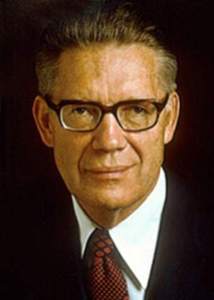
Elder Bruce R. McConkie stated: From other sacred sources we know that Jehovah-Christ, assisted by “many of the noble and great ones” (Abraham 3:22), of whom Michael is but the illustration, did in fact create the earth and all forms of plant and animal life on the face thereof. But when it came to placing man on earth, there was a change in Creators. That is, the Father himself became personally involved. All things were created by the Son, using the power delegated by the Father, except man. In the spirit and again in the flesh, man was created by the Father. There was no delegation of authority where the crowning creature of creation was concerned. 5
Heavenly Mother
Elder Melvin J. Ballard said: No matter to what heights God has attained or may attain, he does not stand alone; for side by side with him, in all her glory, a glory like unto his, stands a companion, the Mother of his children. For as we have a Father in heaven, so also we have a Mother there, a glorified, exalted, ennobled Mother. 6
 Elder Maxwell posed this question: Notice, brethren, how all the prophets treat their wives and honor women, and let us do likewise! Finally, remember: When we return to our real home, it will be with the “mutual approbation” of those who reign in the “royal courts on high.” There we will find beauty such as mortal “eye hath not seen”; we will hear sounds of surpassing music which mortal “ear hath not heard.” Could such a regal homecoming be possible without the anticipatory arrangements of a Heavenly Mother? 7
Elder Maxwell posed this question: Notice, brethren, how all the prophets treat their wives and honor women, and let us do likewise! Finally, remember: When we return to our real home, it will be with the “mutual approbation” of those who reign in the “royal courts on high.” There we will find beauty such as mortal “eye hath not seen”; we will hear sounds of surpassing music which mortal “ear hath not heard.” Could such a regal homecoming be possible without the anticipatory arrangements of a Heavenly Mother? 7
Genesis 2:5 Every plant before it was in the earth: President Joseph Fielding Smith said: The account of creation in Genesis was not a spirit creation, but it was in a particular sense, a spiritual creation. This, of course, needs some explanation. The account in Genesis, chapters one and two, is the account of the placing of all life upon the earth, up and until the fall of Adam, is an account, in a sense, of the spiritual creation of all of these, but it was also a physical creation. When the Lord said he would create Adam, he had no reference to the creation of his spirit for that had taken place ages and ages before when he was in the world of spirits and known as Michael.
 Adam’s body was created from the dust of the earth, but at that time it was a spiritual earth. Adam had a spiritual body until mortality came upon him through the violation of the law under which he was living, but he also had a physical body of flesh and bones. Now what is a spiritual body? It is one that is quickened by spirit and not by blood…After the fall, which came by a transgression of the law under which Adam was living, the forbidden fruit had the power to create blood and change his nature and mortality took the place of immortality, and all things, partaking of the change, became mortal. Now I repeat, the account in Genesis one and two, is the account of the physical creation of the earth and all upon it, but the creation was not subject to mortal law until after the fall. It was, therefore, a spiritual creation and so remained until the fall when it became temporal, or mortal. 8
Adam’s body was created from the dust of the earth, but at that time it was a spiritual earth. Adam had a spiritual body until mortality came upon him through the violation of the law under which he was living, but he also had a physical body of flesh and bones. Now what is a spiritual body? It is one that is quickened by spirit and not by blood…After the fall, which came by a transgression of the law under which Adam was living, the forbidden fruit had the power to create blood and change his nature and mortality took the place of immortality, and all things, partaking of the change, became mortal. Now I repeat, the account in Genesis one and two, is the account of the physical creation of the earth and all upon it, but the creation was not subject to mortal law until after the fall. It was, therefore, a spiritual creation and so remained until the fall when it became temporal, or mortal. 8
The Creation Was Deliberate
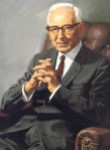 President Joseph F. Smith commented: I tell you, life did not commence upon this earth spontaneously. Its origin was not here. Life existed long before our solar system was called into being. The fact is, there never was a time when man – made in the image of God, male and female – did not exist…The Lord has given us the information regarding his creations, and how he has made many earths, for there never was a beginning, never was a time when man did not exist somewhere in the universe, and when the time came for this earth to be peopled, the Lord, our God, transplanted upon it from some other earth, the life which is found here. 9
President Joseph F. Smith commented: I tell you, life did not commence upon this earth spontaneously. Its origin was not here. Life existed long before our solar system was called into being. The fact is, there never was a time when man – made in the image of God, male and female – did not exist…The Lord has given us the information regarding his creations, and how he has made many earths, for there never was a beginning, never was a time when man did not exist somewhere in the universe, and when the time came for this earth to be peopled, the Lord, our God, transplanted upon it from some other earth, the life which is found here. 9
Moses 3:5 I, the Lord God, created all things of which I have spoken, spiritually, before they were naturally upon the face of the earth: There is no account of the creation of man or other forms of life when they were created as spirits. There is just the simple statement that they were so created before the physical creation. The statements in Moses 5:3 and Genesis 2:5 are interpolations thrown into the account of the physical creation, explaining that all things were first created in the spirit existence in heaven before they were placed upon this earth. We were all created untold ages before we were placed on this earth. We discover from Abraham 3:22-28, that it was before the earth was formed that the plan of salvation was presented to the spirits, or intelligences. This being true, then, man, animals and plants were not created in the spirit at the time of the creation of the earth, but long before. 10
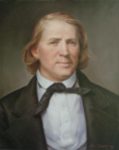
Moses 3:7-8, Genesis 2:7-8 The creation of man: Brigham Young stated: Here let me state to all philosophers of every class upon the earth. When you tell me that father Adam was made as we made adobes from the earth, you tell me what I deem an idle tale. When you tell me that the beasts of the field were produced in that manner, you are speaking idle words devoid of meaning. There is no such thing in all the eternities where the Gods dwell. Mankind is here because they are offspring of parents who were first brought here from another planet, and power was given them to propagate their species, and they are commanded to multiply and replenish the earth. 11
Genesis 2:15 What do we know about the location of the Garden of Eden? We must remember that the whole earth was paradisiacal before the Fall. The Garden of Eden was a center place. After the Fall, there was no Garden of Eden or paradisiacal status on earth. Yet relative to the locale of the site of the Garden of Eden, the Prophet Joseph Smith learned through revelation (D&C 57) that Jackson County was the location of a Zion to be and the New Jerusalem to come. The Prophet first visited Jackson County, Missouri, in the summer of 1831. The Prophet visited Jackson County again in April and May 1832. On one of the occasions, or perhaps both, the Prophet Joseph apparently instructed his close associates, and perhaps even a general Church gathering, that the ancient Garden of Eden was also located in Jackson County. Brigham Young stated, “Joseph the Prophet told me that the garden of Eden was in Jackson [County] Missouri.”12
Heber C. Kimball said: “From the Lord, Joseph learned that Adam had dwelt on the land of America, and that the Garden of Eden was located where Jackson County now is.” 13
Other early leaders have given the same information. Unfortunately, we do not have primary source documentation for all of Joseph Smith’s revelations or doctrinally related declarations. This is especially true for the periods when he did not have a scribe to keep a record of his daily activities. His 1831 and 1832 trips to Missouri fit into this category. One of the early Latter-day Saint residents of Jackson County was Emily Austin. Remembering her first year there, she reminisced, “Our homes in this new country presented a prosperous appearance—almost equal to Paradise itself—and our peace and happiness, we flattered ourselves, were not in a great degree deficient to that of our first parents in the garden of Eden.” 14
She was reflecting a commonly held belief among the Saints that Eden was in Jackson County. It wasn’t until May 1838 that revelation (D&C 116) identified Adam-ondi-Ahman, a site near the Garden of Eden, to be in Daviess County, Missouri, some seventy miles from present-day Kansas City. Other revelations referring to Adam-ondi-Ahman were D&C 78:15-16 and D&C 107:53-57. In accord with the revelations given to the Prophet Joseph Smith, we teach that the Garden of Eden was on the American Continent located where the City Zion, or the New Jerusalem, will be built. When Adam and Eve were driven out of the Garden, they eventually dwelt at a place called Adam-ondi-Ahman, situated in what is now Davies County, Missouri. 15
Genesis 2:21-25 The Roles of Adam and Eve
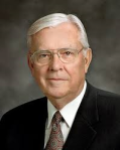 Elder Ballard taught: Heavenly Father assigned different responsibilities in mortality to men and women. To His sons He gave the priesthood and the responsibilities of fatherhood, and to His daughters He gave the responsibilities of motherhood…God has revealed through His prophets that men are to receive the priesthood, to become fathers, and with gentleness and pure, unfeigned love to lead and nurture their families in righteousness, taking for their pattern the way the Savior leads the Church. Men have also been given the primary responsibility for providing for the temporal and physical needs of the family. Women have the ability to bring children into the world and have been given the primary role and opportunity to lead, nurture, and teach their little ones in a loving, safe, and spiritual environment. In this divinely sanctioned partnership, husbands and wives work together. Why this pattern is the approved pattern is not entirely clear. The Lord has chosen to reveal only His will on the matter, not His reasoning. Indeed, the reasons are unimportant as far as we are concerned, because the issue is not open to debate. Consensus and public opinion are irrelevant to a discussion of the doctrine of God, because it is mandated through revelation, not legislation or negotiation…It is an issue of faith–nothing more, nothing less. 16
Elder Ballard taught: Heavenly Father assigned different responsibilities in mortality to men and women. To His sons He gave the priesthood and the responsibilities of fatherhood, and to His daughters He gave the responsibilities of motherhood…God has revealed through His prophets that men are to receive the priesthood, to become fathers, and with gentleness and pure, unfeigned love to lead and nurture their families in righteousness, taking for their pattern the way the Savior leads the Church. Men have also been given the primary responsibility for providing for the temporal and physical needs of the family. Women have the ability to bring children into the world and have been given the primary role and opportunity to lead, nurture, and teach their little ones in a loving, safe, and spiritual environment. In this divinely sanctioned partnership, husbands and wives work together. Why this pattern is the approved pattern is not entirely clear. The Lord has chosen to reveal only His will on the matter, not His reasoning. Indeed, the reasons are unimportant as far as we are concerned, because the issue is not open to debate. Consensus and public opinion are irrelevant to a discussion of the doctrine of God, because it is mandated through revelation, not legislation or negotiation…It is an issue of faith–nothing more, nothing less. 16
What is the official position of the Church with regard to evolution?
- First Presidency letter, “The Origin of Man” (November 1909) “Adam is the first man… It is held by some that Adam was not the first man upon this earth, and that the original human being was a development from lower orders of the animal creation. These, however, are the theories of men.” 17
- First Presidency statement, “Words in Season” (December 1910) “Diversity of opinion does not necessitate intolerance of spirit…our religion is not hostile to real science. That which is demonstrated, we accept with joy.” 18
- First Presidency letter, “‘Mormon’ View of Evolution” (September 1925) “Adam, our great progenitor, the first man…The Church of Jesus Christ of Latter-day Saints, basing its belief on divine revelation, ancient and modern, proclaims man to be the direct and lineal offspring of Deity .” 19
Gordon B. Hinckley put it succinctly: “What the church requires is only belief ‘that Adam was the first man of what we would call the human race.’ Scientists can speculate on the rest.” 20
Harold B. Lee’s plea that we be patient may be the wisest stance:
 Perhaps if we had the full story of the creation of the earth and man told to us in great detail, it would be more of a mystery than the simple few statements that we have contained in the Bible, because of our lack of ability to comprehend. Therefore, for reasons best known to the Lord, He has kept us in darkness. Wait until the Lord speaks, or wait until that day when He shall come, and when we shall be among the privileged either to come up out of our graves and be caught up into the clouds of heaven or shall be living upon the earth likewise to be so translated before Him. Then we shall know all things pertaining to this earth, how it was made, and all things that now as children we are groping for and trying to understand. Let’s reserve judgment as to the facts concerning the Creation until we know these things for sure. 21
Perhaps if we had the full story of the creation of the earth and man told to us in great detail, it would be more of a mystery than the simple few statements that we have contained in the Bible, because of our lack of ability to comprehend. Therefore, for reasons best known to the Lord, He has kept us in darkness. Wait until the Lord speaks, or wait until that day when He shall come, and when we shall be among the privileged either to come up out of our graves and be caught up into the clouds of heaven or shall be living upon the earth likewise to be so translated before Him. Then we shall know all things pertaining to this earth, how it was made, and all things that now as children we are groping for and trying to understand. Let’s reserve judgment as to the facts concerning the Creation until we know these things for sure. 21
What about the fossils indicating that there were hominids before Adam?
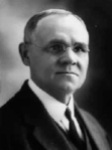 Elder James E. Talmage wrote: Involved in this question is that of the beginning of life upon the earth, and as to whether there was death either of animal or plant before the fall of Adam, on which proposition Elder Smith was very pronounced in denial and Elder Roberts equally forceful in the affirmative. As to whether Preadamite races existed upon the earth there has been much discussion among some of our people of late. The decision reached by the First Presidency, and announced to this morning’s assembly, was in answer to a specific question that obviously the doctrine of the existence of races of human beings upon the earth prior to the fall of Adam was not a doctrine of the Church; and, further, that the conception embodied in the belief of many to the effect that there were no such Preadamite races, and that there was no death upon the earth prior to Adam’s fall is likewise declared to be no doctrine of the Church. I think the decision of the First Presidency is a wise one in the premises. This is one of the many things upon which we cannot preach with assurance and dogmatic assertions on either side are likely to do harm rather than good. 22
Elder James E. Talmage wrote: Involved in this question is that of the beginning of life upon the earth, and as to whether there was death either of animal or plant before the fall of Adam, on which proposition Elder Smith was very pronounced in denial and Elder Roberts equally forceful in the affirmative. As to whether Preadamite races existed upon the earth there has been much discussion among some of our people of late. The decision reached by the First Presidency, and announced to this morning’s assembly, was in answer to a specific question that obviously the doctrine of the existence of races of human beings upon the earth prior to the fall of Adam was not a doctrine of the Church; and, further, that the conception embodied in the belief of many to the effect that there were no such Preadamite races, and that there was no death upon the earth prior to Adam’s fall is likewise declared to be no doctrine of the Church. I think the decision of the First Presidency is a wise one in the premises. This is one of the many things upon which we cannot preach with assurance and dogmatic assertions on either side are likely to do harm rather than good. 22
I appreciate the approach taken by Hugh Nibley:
 Do not begrudge existence to creatures that looked like men long, long ago, nor deny them a place in God’s affection or even a right to exaltation — for our scriptures allow them such. Nor am I overly concerned as to just when they might have lived, for their world is not our world. They have all gone away long before our people ever appeared. God assigned them their proper times and functions, as he has given me mine — a full-time job that admonishes me to remember his words to the overly eager Moses: “For mine own purpose have I made these things. Here is wisdom and it remaineth in me.” (Moses 1:31.) It is Adam as my own parent who concerns me. When he walks onto the stage, then and only then the play begins. 23
Do not begrudge existence to creatures that looked like men long, long ago, nor deny them a place in God’s affection or even a right to exaltation — for our scriptures allow them such. Nor am I overly concerned as to just when they might have lived, for their world is not our world. They have all gone away long before our people ever appeared. God assigned them their proper times and functions, as he has given me mine — a full-time job that admonishes me to remember his words to the overly eager Moses: “For mine own purpose have I made these things. Here is wisdom and it remaineth in me.” (Moses 1:31.) It is Adam as my own parent who concerns me. When he walks onto the stage, then and only then the play begins. 23
From the Encyclopedia of Mormonism
The following comes from the Encyclopedia of Mormonism (under the topic Evolution), which, in my opinion, points members of the Church away from any idea of theistic evolution (the belief in a God-inspired evolution—in which lower forms of life progressed over great periods of time to the point that God could take the spirit of the man Adam and place it in an animal and declare it to be the first man):
The position of the Church on the origin of man was published by the First Presidency in 1909 and stated again by a different First Presidency in 1925: The Church of Jesus Christ of Latter-day Saints, basing its belief on divine revelation, ancient and modern, declares man to be the direct and lineal offspring of Deity…. Man is the child of God, formed in the divine image and endowed with divine attributes (see Appendix, “Doctrinal Expositions of the First Presidency”).
The scriptures tell why man was created, but they do not tell how, though the Lord has promised that he will tell that when he comes again (D&C 101:32-33). In 1931, when there was intense discussion on the issue of organic evolution, the First Presidency of the Church, then consisting of Presidents Heber J. Grant, Anthony W. Ivins, and Charles W. Nibley, addressed all of the General Authorities of the Church on the matter, and concluded, Upon the fundamental doctrines of the Church we are all agreed. Our mission is to bear the message of the restored gospel to the world. Leave geology, biology, archaeology, and anthropology, no one of which has to do with the salvation of the souls of mankind, to scientific research, while we magnify our calling in the realm of the Church….
Upon one thing we should all be able to agree, namely, that Presidents Joseph F. Smith, John R. Winder, and Anthon H. Lund were right when they said: “Adam is the primal parent of our race” [First Presidency Minutes, Apr. 7, 1931]. 24
Notes
- Kent Jackson, Studies in Scripture, 1:27-28.
- Bruce R. McConkie, Christ and the Creation, p. 79.
- Parley P. Pratt, Voice of Warning, p. 90-91 and Joseph Fielding Smith, Man, His Origin and Destiny, p. 381-82.
- Teachings of the Prophet Joseph Smith, p. 157.
- Bruce R. McConkie, Promised Messiah, p. 62.
- Melvin J. Ballard, cited in Bryant S. Hinckley, Sermons and Missionary Services of Melvin Joseph Ballard, p. 205, see also Hymn 292, O My Father, by Eliza Roxy Snow.
- Neal A. Maxwell, The Women of God, Ensign, April 1978.
- Joseph Fielding Smith, Doctrines of Salvation, 1:76-77.
- Joseph Fielding Smith, Doctrines of Salvation, 1:139-40.
- Joseph Fielding Smith, Doctrines of Salvation, 1:75-76.
- Brigham Young, Journal of Discourses, 7:285-86.
- Wilford Woodruff, Journal of Wilford Woodruff, vol. 5, 15 Mar. 1857, Archives Division, Church Historical Dept., Salt Lake City.
- Andrew Jenson, Historical Record, 9 vols., Salt Lake City: Andrew Jenson, 1888, 7:439; see also Orson F. Whitney, Life of Heber C. Kimball, Salt Lake City: Bookcraft, 1967, p. 219.
- Mormonism; or, Life among the Mormons, New York: AMS Press, 1971, p. 67.
- Joseph Fielding Smith, Doctrines of Salvation, 3:74, Ensign, Jan 1994)
- M. Russell Ballard, Counseling with our Councils, pp. 55-57.
- This was reprinted in 2002 “The Origin of Man,” Ensign, Feb 2002, 26.
- First Presidency (Joseph F. Smith, John R. Winder, Anthon H. Lund), “Words in Season from the First Presidency”, Deseret Evening News, 1910-12-17, sec. 1, p. 3.
- First Presidency (Heber J. Grant, Anthony W. Ivins, Charles W. Nibley), “‘Mormon’ View of Evolution”, Deseret News, 1925-07-18, reprinted in Improvement Era 28:1090–1091 (Sep. 1925).
- Gordon B. Hinckley in 2002; cited in Elaine Jarvik, “Beliefs on Darwin’s evolution vary from religion to religion,” Deseret Morning News (19 January 2006).
- Harold B. Lee, Teachings of Harold B. Lee (Salt Lake City, Utah: Bookcraft, 1996), 29.
- James E. Talmage, Personal Journal (7 April 1931) 29:42, Archives and Manuscripts, Harold B. Lee Library, Brigham Young University, Provo, Utah (emphasis added).
- Hugh W. Nibley, “Before Adam,” in Hugh W. Nibley, Old Testament and Related Studies, Vol. 1 of Collected Works of Hugh Nibley, (SLC, Utah : Deseret Book Company ; Provo, Utah: Foundation for Ancient Research and Mormon Studies, 1986),82–83.
- 24. The Encyclopedia of Mormonism, New York: Macmillan Publishing Company, 1992, vol. 2, p. 478.

No Comments
Comments are closed.